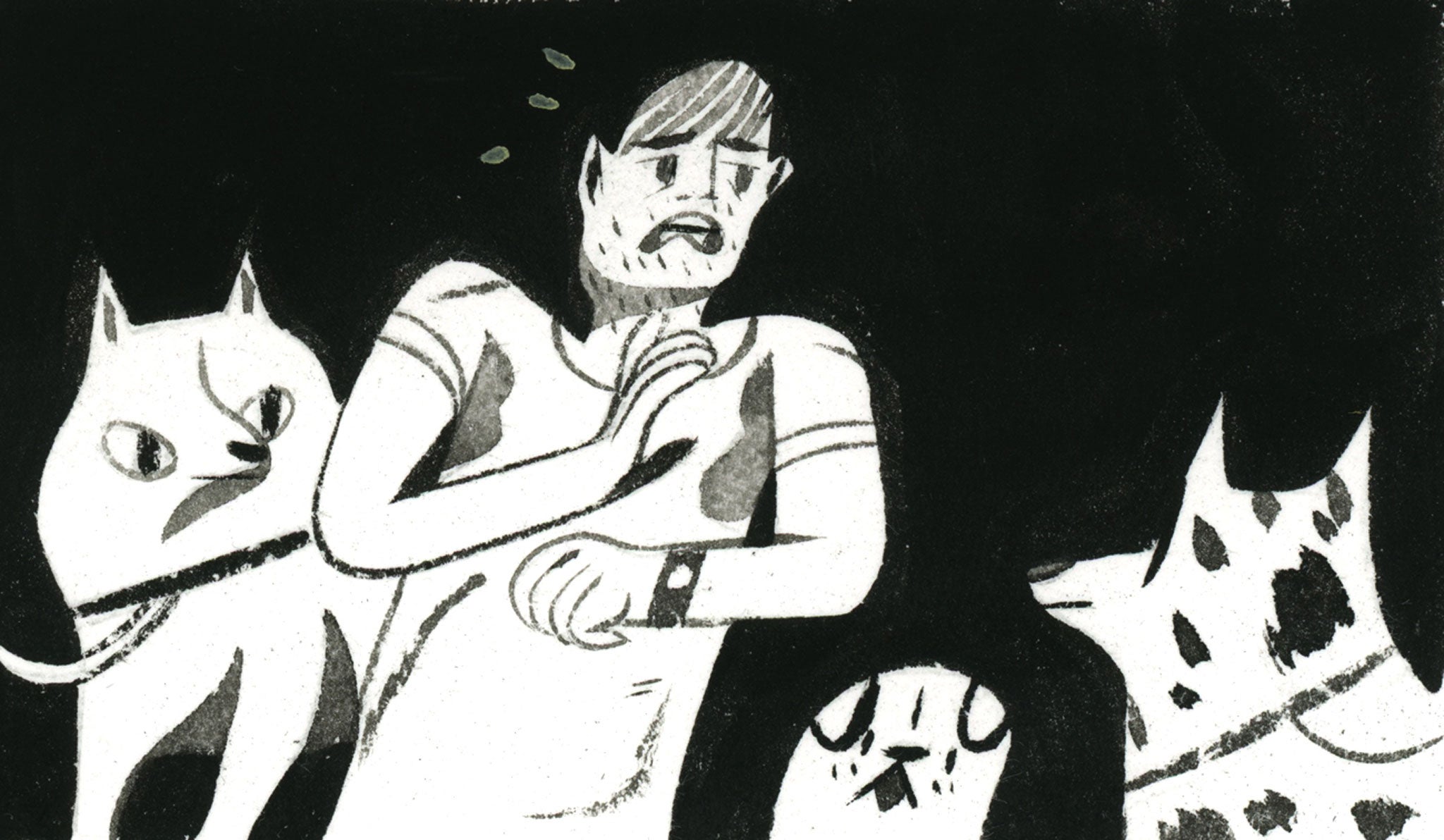
The pelvis in the human female is an example of perfectly decent mammalian design rendered problematic by evolution. There are two difficulties. One: because humans are bipedal, the birth canal is tilted. The baby does not drop down a true cylinder; instead, the baby must travel the rather sharp curve of the pelvis. As a result, human births are much more troublesome than those of other large mammals. Two: on account of our wonderfully large brains, human babies have huge heads, which compounds the problem of the tilted pelvis.
Marti LaChance
You have no idea how awful the human body is. Like most mammals, we sweat to maintain our temperature, but most animals don't have as many sweat glands as we do. We are the least efficient thermoregulators in the mammal world: only apes and, oddly, horses have as many sweat glands, mostly in the armpits, as we do. Have you ever smelled someone with really sweaty armpits? We lose so much water from doing simple things, such as exercising, that other animals would not. Terrible design.
Our eyelids are also pathetic compared to those of most other animals, who have two sets of eyelids: one opaque like ours that keeps out the light, and another, clear "nictitating membrane" that keeps out dust and water but is clear so animals can see through it. Why don't we have nictitating membranes? Dry eye and lots of other eye problems would not exist if our eyes were better designed.
Ever hear of a "blind spot"? The way the eye is shaped, there is a spot that we literally cannot see, and the brain fills in the blanks. All vertebrates have this… but not all animals. Octopuses have better-designed eyes that lack a blindspot. If we're so great, why do octopuses have better eyes? Then you have problems such as myopia, glaucoma, cataracts…
Our genitalia are a mess: urine and semen come out of the same hole in males, and the female reproductive system seems totally unable to handle our large-headed babies. We have to eat vitamin C to not get scurvy, while most animals make it themselves.
Matan Shelomi, biologist, animal physiologist
The human vertebral column (backbone). Originally evolved for an all-fours-walking quadruped where it worked under tension – like a suspension bridge. Now evolved to support upright Homo sapiens, where it has to work under compression. If you imagine the engineering problems involved in upending a suspension bridge to use it as a pillar, you get some idea as to why humans are so prone to back problems.
Howard Aiken, biological sciences graduate
These are edited answers. For the full versions, go to quora.com, the popular online Q&A service
Join our commenting forum
Join thought-provoking conversations, follow other Independent readers and see their replies
Comments